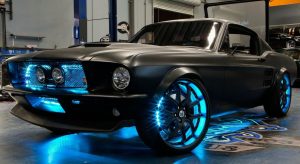
The Automotive Industry – The Epicenter of Change
As the economy undergoes a revolution, the automotive industry is at the epicenter of change. From a labor-intensive industry to one that embraced technological breakthroughs and industrialization of the primary production processes, the automotive industry has experienced many changes and innovations over the years. New technologies such as robotics, additive manufacturing, and the Internet of Things are redefining the industry. Digitalization of the automotive value chain is widely considered the future of the industry.
The automotive industry is made up of several types of companies. Some focus on the component parts of cars and trucks, while others produce after-market replacement parts. These companies sell parking lights, brakes, clutches, and air filters. Other businesses in the automotive industry include wholesalers and parts stores. Auto repair shops often operate gas stations as well as sell replacement parts to the automotive industry. And, of course, the automotive industry is a highly competitive industry.
In terms of size, the automotive industry has grown enormously, but with relatively few players. During the last 15 years, there have been only two new entrants to the list of top automotive OEMs. This compares with ten new players in the handset industry over the same period. Therefore, the automotive industry is currently undergoing a transformation that is likely to change the way vehicles are manufactured and the industries they support. In addition to digital sciences, the automotive industry is increasingly relying on new technologies to become more efficient and convenient.
Globally, the automotive industry is thriving. Growth is driven by positive macroeconomic development, including the development of the global middle class. Emerging markets, such as China, will continue to rely on the demand from these markets. The development of automotive revenues will be largely determined by the product mix of each company. In addition, consumer mobility behavior is changing, with as many as one in every ten cars sold in 2030 likely to be shared. These changes will create a market for fit-for-purpose mobility solutions.
Today’s challenges in the automotive industry require organizations to develop transformational change to keep pace with the industry’s ever-changing needs. In addition to digitization, car OEMs must align their people, processes, and technology in order to compete and thrive in this increasingly global arena. In addition, cybersecurity and data privacy issues will be critical challenges that manufacturers must address. Additionally, they must adapt to new business models and differentiate their products. If they don’t, their products will become irrelevant and their competitors will take advantage of them.
Patent controversies have been a major source of controversy for the automotive industry in its early years. For instance, in 1901, an American promoter filed a comprehensive patent that British courts rejected. Ford fought the Association of Licensed Automobile Manufacturers over the Selden patent, claiming that the latter owned the basic patent on a gasoline-powered automobile. The court held the Selden patent to be valid but held that Ford did not infringe on it.



Average Rating